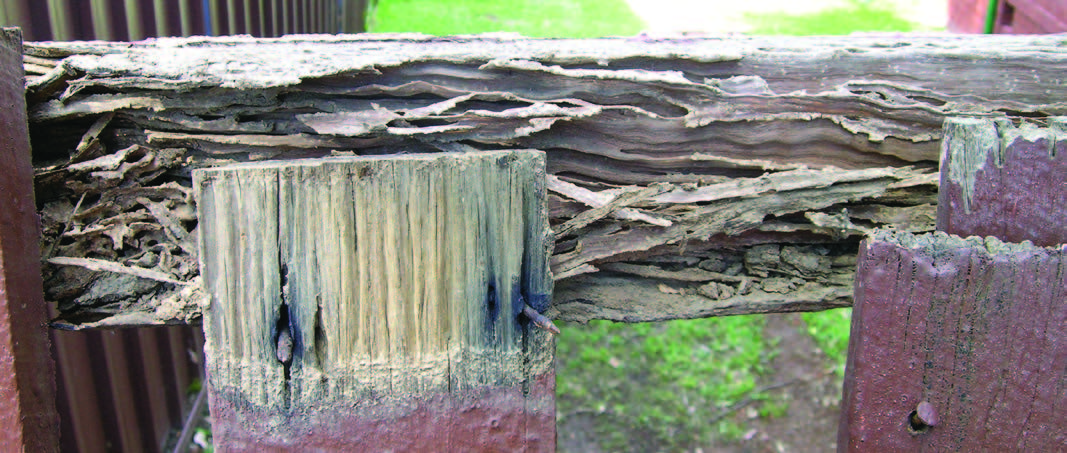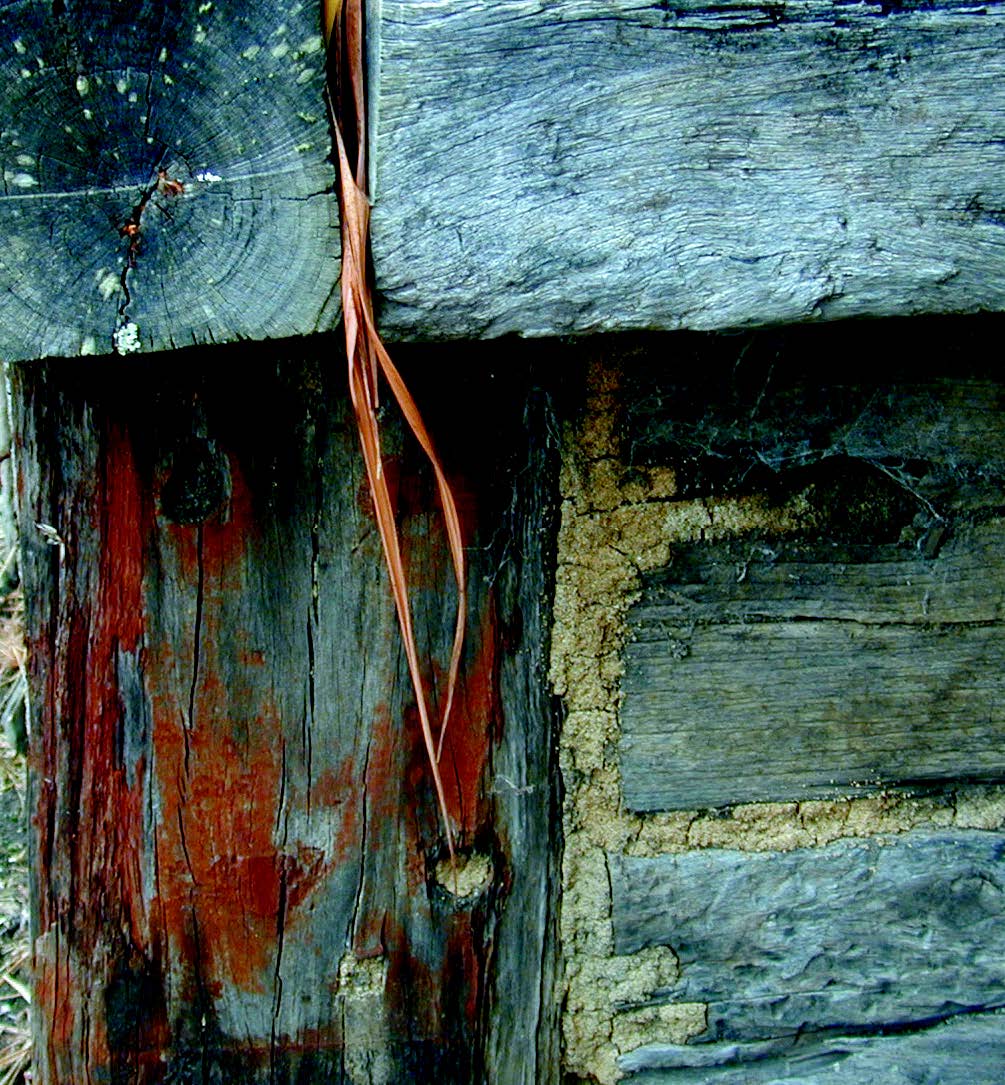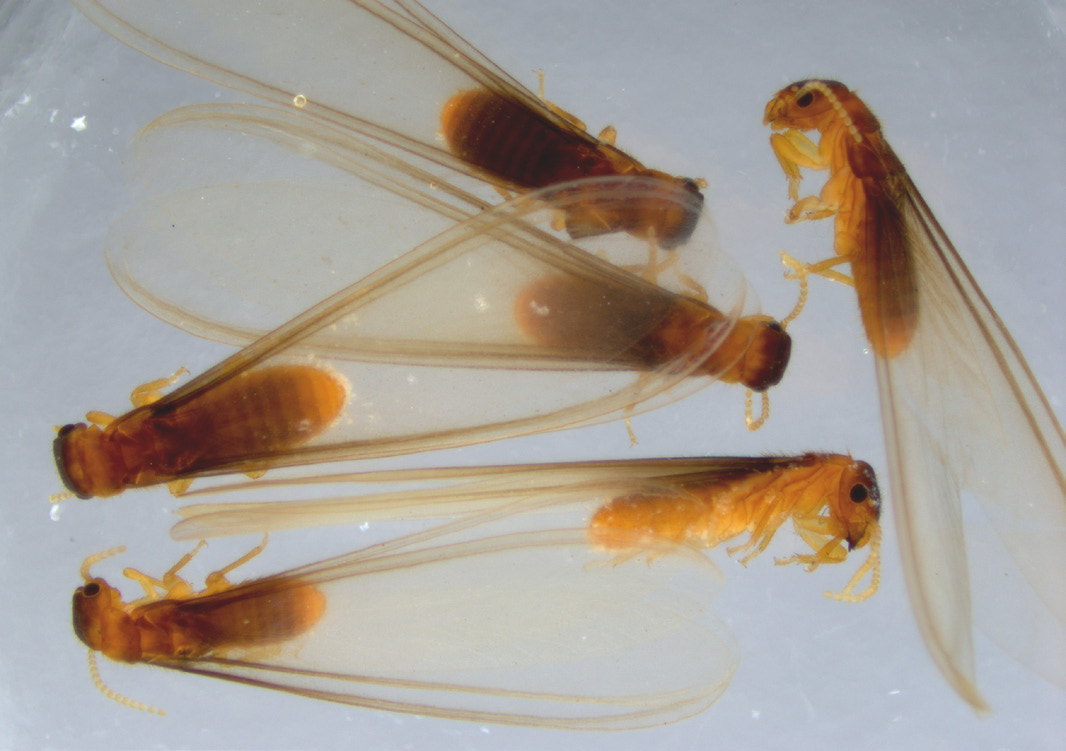PESTS AND DISEASES OF FORESTRY IN NEW ZEALAND
Surveillance programme for subterranean termites
From SURVEILLANCE 39 (1) 2012.
New Zealand has three species of native termites. They do not form large colonies and are generally nondestructive. As a consequence, New Zealand wooden buildings are not built to resist termite attack. This means the establishment of exotic termites would pose a significant threat to buildings, timber and live trees. This article outlines the problem and describes a surveillance and publicity programme to raise awareness and counter the risk of exotic termites becoming established in New Zealand.
Exotic termites in New Zealand

Historically, in particular before 1960, New Zealand imported large quantities of untreated Australian hardwood timber for uses such as utility poles and railway sleepers. Australia has a rich termite fauna and many colonies of termites were introduced in this timber.
Laws were put in place to require inspection of imported timber to reduce the risk of further termite incursions, and action taken to find and eradicate colonies that were already in the country. In the mid-1980s compulsory fumigation of imported timber was introduced. Between 1936 and 2001 more than 700 infestations of Australian termites were recorded in New Zealand. The most commonly found species was the subterranean termite Coptotermes acinaciformis.
Subterranean termites
Subterranean termites are highly destructive (Figure 1). Despite their name they will infest wood both above and below ground. They can form large colonies and will attack both living and dead trees, as well as wood products including house framing, fencing, posts, poles and wooden landscaping. They create underground tunnels to travel 50 metres or more in all directions from the nest site to find new wood sources to feed on. They move over open surfaces such as paths, floors and walls by forming mud tunnels to travel in. Many New Zealand houses would offer easy access for these termites and be very susceptible to subterranean termite attack.
Eradicating subterranean termites

Historically, subterranean termites were treated by methods such as blowing arsenic dust into the termite galleries. A safer and more effective eradication method now exists, using insecticides specifically formulated for termites, placed in underground and above-ground tamper-proof bait stations. The insecticides act slowly, allowing them to be spread throughout the colony by the communal feeding habits of the termites. Using this system MAF has developed a very effective programme for eradicating subterranean termite colonies.
Recent subterranean termite incursions
Since 2006 there have been five detections of subterranean termites in New Zealand: two in the Nelson district and three in the Auckland area. MAF has eradicated one of these infestations and has ongoing eradication programmes against the other four.
The entry pathway into New Zealand for at least four and possibly all five of these incursions is secondhand railway sleepers imported from Australia in the mid-1990s for landscaping. Some of these consignments did not receive the correct treatment for termites. Because termite colonies are slow-growing they have not been detected for 10–15 years after entering New Zealand.
Since the mid-1990s, MAF’s border procedures have been improved to mitigate the risk of further termite incursions. However, other subterranean termite colonies may exist as a result of the 1990s imports, and perhaps even from timber imported prior to compulsory treatment in the 1980s. Because of this, and because of the serious impacts that would occur if they established in New Zealand, MAF is undertaking a surveillance programme for subterranean termites.
Surveillance programme
The MAF surveillance programme for subterranean termites involves a publicity campaign to educate targeted sectors of the public about signs indicating the presence of subterranean termites. The public will be encouraged to look for these signs and report suspect finds to MAF. The publicity campaign runs from February to June 2012.

Because we are most concerned about railway sleepers imported for landscaping, the primary target audience is gardeners and landscapers, through advertisements in gardening magazines and fact sheets and letters sent to landscapers’ professional bodies. Other target audiences are timber industry bodies and recycled timber merchants. Fact sheets are being sent to utility companies and rail authorities, as employees in these industries could find termites in utility poles or railway sleepers.
The advertisements and fact sheets provide a description and photographs of the signs of subterranean termite activity people are likely to see. These are mud tunnels across open surfaces and mud packing between layers of landscaping timber or inside wall cavities (Figure 2). It is also possible that people may see flying termite reproductives (alates) (Figure 3), which can swarm from mature colonies on warm, humid evenings in late spring and summer. The other forms of termites in the colony (queen, king, workers and soldiers) are unlikely to be seen unless nests or mud tunnels are broken open. However, people are urged not to disturb termites or the surrounding areas as this could make eradication more difficult. For more information and pictures of subterranean termite activity visit the MAF website: http://www.biosecurity.govt.nz/pests/australian-subterranean-termite. If you think you have seen subterranean termite activity call the MAF exotic pest and disease hotline, 0800 80 99 66.
Bruce Philip
Adviser, Response Group (Plant and Environment) Compliance and Response, MAF

 Farm Forestry New Zealand
Farm Forestry New Zealand

